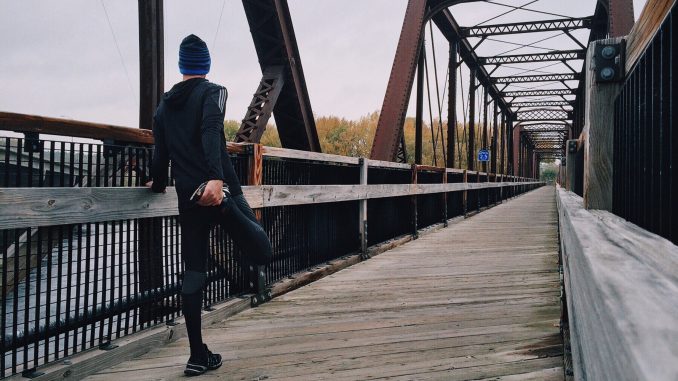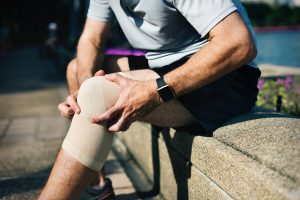
Sports involvement always has a danger of harm. Foot problems that can affect sports involvement can include; ingrown toenails, bleeding under the nail, blisters and onychomycosis (fungal disease). The following are injuries that may require an athlete to invest in feet treatment for longevity.
Stress Fractures
Stress fractures are little fractures in bones which frequently grow from chronic, excessive effect and poor foot function. In runners, the bones of the midfoot (metatarsals) are particularly vulnerable to these fractures.
Sprains
Ligament injuries demand a stretching or a tearing of the tissue. Sprains typically happen when a person falls and lands on an outstretched arm, slide into a foundation, land on both sides of the foot, or turn a knee with the foot planted firmly on the floor. This causes an overstretch or tear of the ligament(s) supporting this joint.
Stress
Based upon the seriousness of this injury, a strain may be a simple overstretch of the muscle or tendon, or it may lead to a partial or total tear. Strains may be chronic or acute. An acute strain results from injury or an injury like a blow to the human body; it may also result from improperly lifting heavy items or over-stressing the muscles. Chronic strains are usually the consequence of congestion — prolonged, repetitive movement of the joints and tendons.
Bursitis
An instance of the fluid-filled sac (bursa) found between the skin of the heel along with the tendon. Normally just 1 bursa is located from the heel, involving the Achilles tendon and the heel bone.
Metatarsalgia
The metatarsophalangeal joint (MPJ) pain generally leads to tissue changes as a result of abnormal foot biomechanics. Sesamoiditis — is pain in the sesamoid bones under the mind of the 1st metatarsal. Identification for all these conditions can be reached inside the clinical setting.
Heel Spurs
A painful condition brought on by calcium deposits around the bottom of the heel placing pressure on different areas of the feet. High impact sports which strain the arch and toss off the natural equilibrium of the foot, such as running and squash are the most frequent causes. Even speedy weight reduction may be the offender. Medical evaluation is necessary. Chiropodists or podiatrists may advocate using a “non-weight bearing” devices like orthopaedic sneakers, a walker, crutches, or just a wheelchair or break. These may aid healing by relieving strain on the injured portion of the foot.
Popularly called heel pain. Inflammation of this dense ring of tissue called the plantar fascia that extends from the base of the heel bone to the base of the feet (ball of the foot).
Shin splints are harms to the front of the outer leg. While the precise harm isn’t understood, shin splints appear to result from trauma to the thoracic (posterior peroneal tendon) and adjacent cells at the very front of the leg. Shin splints signify a member of a bunch of accidents called “congestion accidents.” Shin splints occur most commonly in runners or competitive walkers.
Achilles Tendinitis is an inflammation of the tendon or sheath enclosing the Achilles Tendon situated near mid-calf. Symptoms include pain behind the heel, ankle, and calf when you really do weight-bearing exercise. Achilles tendinitis is caused by extending the tendon abruptly or when you are not utilised to it. Normally, this occurs when you work out too quickly or wear the wrong shoes.
Whatever physical activity you perform – walking, running, weight lifting-protect your feet by wearing the ideal athletic shoes for your action or speaking with a foot doctor for health recommendations. Additionally, be certain that you stretch out your toes and leg muscles before and after every action.

Runner’s Knee
Ordinarily, the kneecap moves up or down slightly without touching the thighbone throughout jogging. When the toes excessively pronate, the lower leg spins inward, pulling the kneecap inward, whereas the quadriceps muscles pull the kneecap outward. These opposing forces induce the rear of the kneecap to rub the end of the thighbone, leading to pain. Frequently custom-made foot orthotics are needed to bio-mechanically help the foot to do properly.
Hamstring Injury
A hamstring injury is any injury to the hamstring muscles, at the rear of the uterus. The hamstrings, which encircle the hip and bend the knee, are poorer than the opposing quadriceps muscles. If the hamstrings aren’t at least 60% as powerful as the quadriceps, the quadriceps overpower and injure them. Then after recovery starts stretching and strengthening exercises may avert re-injury.
Ingrown Toenail
An ingrown toenail is a condition where the borders of the nail grow in the surrounding epidermis. The region is generally red and might be warm; when not treated, it’s prone to disease. When infected, the region becomes more painful, red, bloated and pus-filled blisters may grow and drain.
<span data-mce-type=”bookmark” style=”display: inline-block; width: 0px; overflow: hidden; line-height: 0;” class=”mce_SELRES_start”></span>
